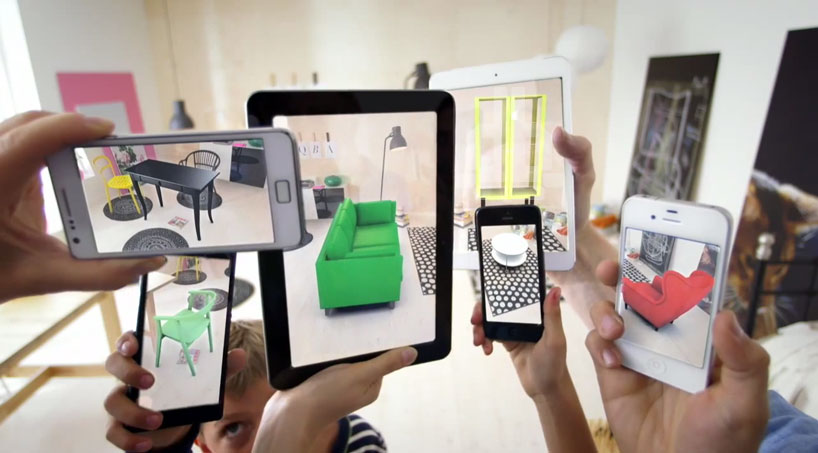BLOG/Digital Marketing
7 Ways Augmented Reality is Changing the Mobile Marketing Industry
Guest Blog Post By: Aby Nicole League
What if your target customers can experience your products virtually in the comfort of their home using their smartphone or tablet? Can you imagine your revenues going up?
That's the mobile marketing opportunity that augmented reality (AR) offers—slowly but surely, it’s changing the way brands engage with customers. It can be a valuable part of your mobile-first strategy that will lead to a successful customer journey.
With the recent launch of Apple's ARKit technology for building AR applications, augmented reality is expected to make waves in the mobile marketing industry. The future of mobile commerce is here in the form of AR experiences, and forward-thinking businesses are quick to adopt this technology to attract more customers and serve them better.
Should you join the bandwagon? Before you decide to use AR for your marketing campaigns, learn its impact in the industry first. Here are seven ways augmented reality is reshaping businesses today.
 Photo courtesy of OyundariZorigtbaatar via Wikimedia Commons
Photo courtesy of OyundariZorigtbaatar via Wikimedia Commons
1. Providing a personalized customer experience
According to a Boston Consulting Group report, companies that personalize the customer journey achieve 6% to 10% sales increase, which is thrice faster than others. If you want to include personalization in your mobile marketing strategies, augmented reality is the way to go.
Using AR makes it possible for brands to create a more intimate connection with their customers than conventional marketing strategies (such as print and TV ads) do.
The recently unveiled IKEA Place app, which uses the new ARKit framework, effectively brings the furniture retailer's showroom into potential customers' homes. The AR app lets people view, for example, how a particular chair from the company's catalog would look like in their living room before they purchase it. They can switch between different colors, designs, and sizes until they find the one that matches their preference.
2. Engaging consumers through interactive advertising
Augmented reality can give traditional (a.k.a boring) print and billboard ads a boost in customer engagement by adding an element of interactivity. Just by aiming a smartphone camera at a newspaper or magazine ad, poster or billboard, people can use AR to enjoy a real-time 3D multimedia experience.
If your mobile marketing campaign includes floating ads on YouTube, Facebook or other social media channels, AR can be integrated into it to render the video ads in animated 3D views. Aside from making your ads more appealing and interesting, this AR feature can also help your target customers learn more about the benefits of using your product. With AR, you can overlay supplemental information on the screen when it's viewed on a mobile device.
3. Helping consumers make purchasing decisions
With augmented reality, you can make your customers happy and reduce product returns and complaints by helping them get to know your products better and make the right buying decision.
Several companies developed their own AR app for that purpose. Converse has The Sampler app for iPhones that lets people virtually try on different shoes by pointing their smartphone at their foot. The app also allows shoppers to share screen captures on Facebook to ask for their friends' comments.
AR apps are just as useful in the beauty industry. Cosmetics store chain Sephora developed an app that makes it convenient for shoppers to try different lipstick and eyeshadow colors and choose the best cosmetic products without leaving their home. A smartphone user just needs to open the app, and it will scan her face and show the variety of products and styles to choose from.
4. Making products stand out at trade shows
Printed brochures or flyers and looping product videos—which people are sure to ignore even if you shove the materials to their face—might become a thing of the past at trade shows and expos.
To market your company and products at a trade show, AR's novelty and cool 3D interactivity allow you to stand out from the competition. For example, a mobile device that feeds video of an AR product model to a large flat screen can easily turn heads and wow the crowd. You can even turn your business card into an awesome catalog that features 3D models of your products.
5. Encouraging repeat purchases and customer loyalty
If your customers experience set-up problems with your product, you’ll lose their loyalty, and chances of them doing business with you again will be slim.
As a Parks Associates research shows, only 33% of customers who had set-up problems would buy a similar product from the brand in the future. This data highlights the importance of making your product manuals easy to follow, or end up with frustrated and angry customers.
Taking product support to a whole new level, augmented reality is a great alternative to user manuals that customers don't bother to read until a problem props up.
Rather than make customers pore over a complicated manual, AR displays interactive visuals over a product image—as viewed on a smartphone or tablet—that show how to set up, configure, maintain, repair or troubleshoot a product.
An example is Audi's AR-enabled user manual that features an automatic troubleshooting feedback when a service light appears for a more intuitive car repair experience.
6. Geo-targeted marketing
Augmented reality can help potential customers near your location to find you and visit your store. This is how the Nokia Lumia City Lens, an AR app, is able to provide suggestions on nearby restaurants, banks, and shops to users of Lumia phones. People can just open the app and aim their smartphone camera at buildings to find information about the different establishments in the area.
7. Boosting B2B mobile marketing
Augmented reality isn’t just limited to consumer marketing—it's even more useful to the B2B industry where the stiffer competition calls for more focused marketing campaigns. Businesses can take advantage of AR in their sales and product demos to promote their products or services more effectively to other companies.
For example, an office equipment company can use an AR app to show a prospective client how a piece of furniture will look like when it's used in the client's office. Sales representatives can show stunning product demos in client presentations using an AR software installed on a mobile device.
Is AR suitable for your mobile marketing campaign?
Whether augmented reality will work for your brand or not depends on your target customers. While AR is a powerful and innovative mobile commerce tool, it isn’t a good strategy if your prospects don't use mobile devices for shopping or researching products and services as often as tech-savvy consumers do. Thus, doing market research to determine the feasibility of AR makes a lot of sense.
Just like any marketing tool, AR has to be tested first before adding it to your marketing stack and allotting budget for it. AR can cost you a lot of time and money, so you have to make sure that it matches not only your audience but also your marketing objectives.
About the Author
Aby is a qualitative researcher and a passionate writer. She writes mostly about health, psychology, technology, and marketing. You can follow her at @abyleague or visit here website at www.aboutpossibilities.com.
Contact Digital Operative to learn more about our digital marketing services!
More from the
DO Blog

Designing & Building Product Finder Quizzes for eCommer...
Strategy & Planning / December 23, 2020
View Blog Post
3 Customer Motivation Strategies to Improve Your eCommerce i...
Strategy & Planning / July 27, 2020
View Blog Post
